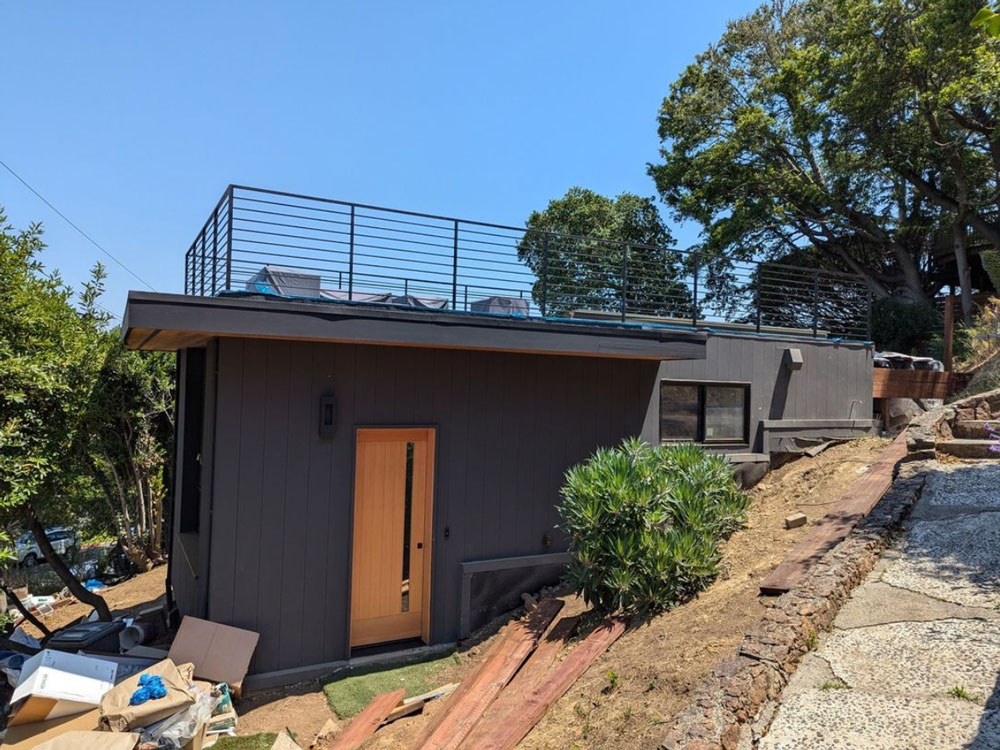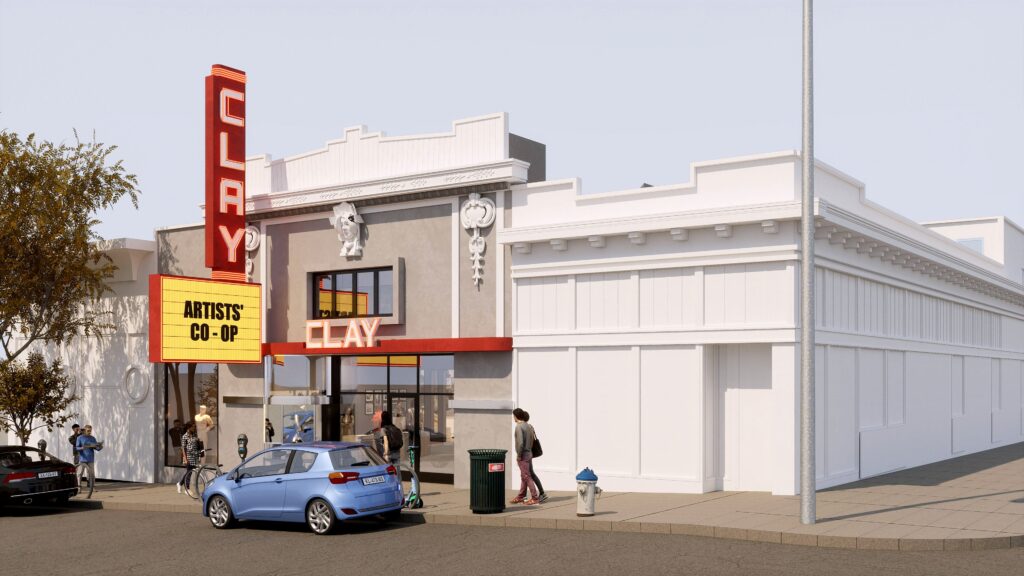While listening politely to neighbor concerns in a planning commission meeting (all valid, if not necessarily relevant to the project at hand), or while debating over building code minutiae with a building department plan checker, or while filtering all of the reasons from a general contractor that a building is simply impossible (unless they are hired, of course), I find my mind returning to again and again to the same theme: building is an act of war against inertia. Any change, physical, spiritual, or otherwise, requires effort, and effort is another way of expressing energy. Building anything requires a great deal of effort and energy to alter the physical, financial, political, and even cultural status quo.

Work In Progress – David Marlatt
Energy is spent. There can be no construction without destruction. The simple act of building anything destroys or at least displaces whatever else that was occupying that space previously, At a tangible physical level, dirt is dug, plants are removed, trees are often cut, and possibly older structures are demolished. This type of destruction meets resistance from the defenders of dirt, grass, trees, and older structures. But other things are also destroyed or altered by the act of building, and this can be less obvious such as the client’s bank account balance that is exhausted when funds are displaced to pay for the project, and are no longer available for other potential projects which now will never be realized. The destroyed things can be completely intangible and abstract, such as when a client’s abstract dreams for a hundred alternative new houses are consolidated into a single artifact that will become the actual new house in which he or she will live. When one house is built, all of design alternatives are extinguished with all of their unrealized potential. The act of building, with its need for financing and concrete decisions, leaves in its wake the debris of all other potential dreams and projects for which those funds and those decisions and that energy might have been spent. It is little wonder that any building project, no matter how merited, meets resistance, sometimes active and sometimes passive. Building is not just the act of making something; it is also the act of giving up what might have been.

Understanding that making something means giving up something else, the reality that all projects meet a wall of inertia is understandable. And, like every natural force, inertia acts equally on all that it encounters. It is neither good nor bad. Inertia’s greatest manifestation in society is government bureaucracy. Bureaucracy inherently slows and resists change while ostensibly facilitating it, but that’s not necessarily a bad thing. With equal disregard for all it encounters, institutional bureaucracy can slow down a bad idea until a better idea comes along just as easily as it can slow down a really good idea until it loses the energy to move forward and dies on the vine. As Isaac Newton first formulated, overcoming inertia requires effort. “Effort” can be in the form of the physical effort to move dirt and lift steel in the air, but it can also be the effort to overcome cultural and legal hurdles, secure financing, and manage complex and protracted approval processes. Effort can be measured in the tons and cubic yards or in the months, years and dollars required to overcome political, cultural and financial obstacles.
Before drawing swords against inertia that slows projects, however, let’s also recognize that inertia (in reasonable doses) is essential in a democratic society. It slows down ill-conceived projects and ensures that there is time for a deliberative process that considers multiple views and compromise. Without sufficient time to deliberate, a community’s voice cannot be heard and it will feel – and sometimes it will be in fact – steamrolled by a developer’s juggernaut and the cash-strapped government that permitted it. Although everyone wants progress (or says that they do), no one wants to make mistakes that will rest in the landscape for generations. A little bit of judicious inertia is most often a very good thing.
Caught between a desire to do good and a duty to serve their client, an architect is tempted to seek a compromise between the inertial forces gathered against construction and the destructive forces necessary to build. Resistance to change is often institutionalized and somewhat faceless such as a building department, a bank, or a neighborhood group. And it is probably well-intentioned, trying to preserve something it regards as more valuable than the building being proposed, such as money, other buildings, neighborhood patterns, or trees. Indeed, architects must be patient with, and even empathize with, the very people that often slow them down. As licensed professionals, architects have both legal and ethical duties to public health, safety and welfare that transcend their immediate design problems.

Project Render, DNM Architecture
But a work of architecture must be built to be complete, and it is the architect’s professional duty to shepherd their client’s projects to successful completion. Any architect with an active project is a change agent and therefore – always, unavoidably and inevitably – an adversary of the forces of inertia aligned to stop or slow their project. Governments speak for their electorate. Banks speak for their investors and capital. Neighborhood groups speak for their communities. Architects speak for their buildings. It’s their job.
Building may not be the equivalent of waging war, but it is at least a struggle balancing the priorities and exigencies – often contradictory – of multiple parties. And while architects may only soldier one side of the struggle (i.e. be pro-building), they also know that their the creative forces driving change are just the Ying to the Yang of the inertial forces that slow them down. Speaking at a design commission hearing, sifting through a contractor’s list of reasons they deserve more more to do less, listening to a client’s accountant explain why the project “just doesn’t pencil,” the project’s seeming adversaries are playing an essential role making the final project stronger in ways that the architect doesn’t fully control. The architect is the advocate of the building, and the inertial forces that may appear opposed to building are also doing their job to help insure that what is being created will be of greater value than all of the trees, grass, money, dreams and parallel possibilities being displaced.
